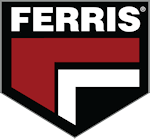As businesses strive to align with the EU’s Fit for 55 initiative, which aims for a minimum 55% reduction in greenhouse gas (GHG) emissions by 2030, evaluating operational costs and return on investment has never been more critical. With many economic and environmental indicators in flux, organisations must adopt practical, cost-effective strategies to meet sustainability targets while maintaining financial viability.
Balancing Costs and Sustainability
Total Cost of Ownership (TCO) and Return on Investment (ROI) are key metrics in evaluating the financial impact of sustainable solutions. However, the challenge lies in making informed decisions without disrupting Capital Expenditure (CAPEX) and Operational Expenditure (OPEX). Fortunately, there are viable solutions that seamlessly integrate into existing operations, offering both environmental and economic benefits.
The Impact of HVO100 Renewable Diesel
One such solution is HVO100 renewable diesel, which can reduce CO₂ emissions by nearly 90% on a Well-to-Wheel basis, all without requiring additional infrastructure investments. This drop-in fuel alternative is already approved by leading Ferris diesel engine suppliers, including Yanmar and Caterpillar®, making it an easy and effective transition for businesses looking to cut emissions.
Enhancing Efficiency with Ferris ZTR Mowers
The high-performance mowing efficiency of Ferris Zero-Turn Radius (ZTR) mowers further amplifies carbon savings. Due to their industry-leading productivity, the CO₂ footprint per hectare per hour is significantly reduced when operating on HVO100, providing a substantial sustainability advantage without sacrificing performance.
Take the Next Step
If you’re keen to explore the financial and environmental benefits of integrating HVO100 and Ferris ZTR mowers into your operations, get in touch.
www.ferrismowers.co.uk | 01264 311690 | ferris@thwhite.co.uk

